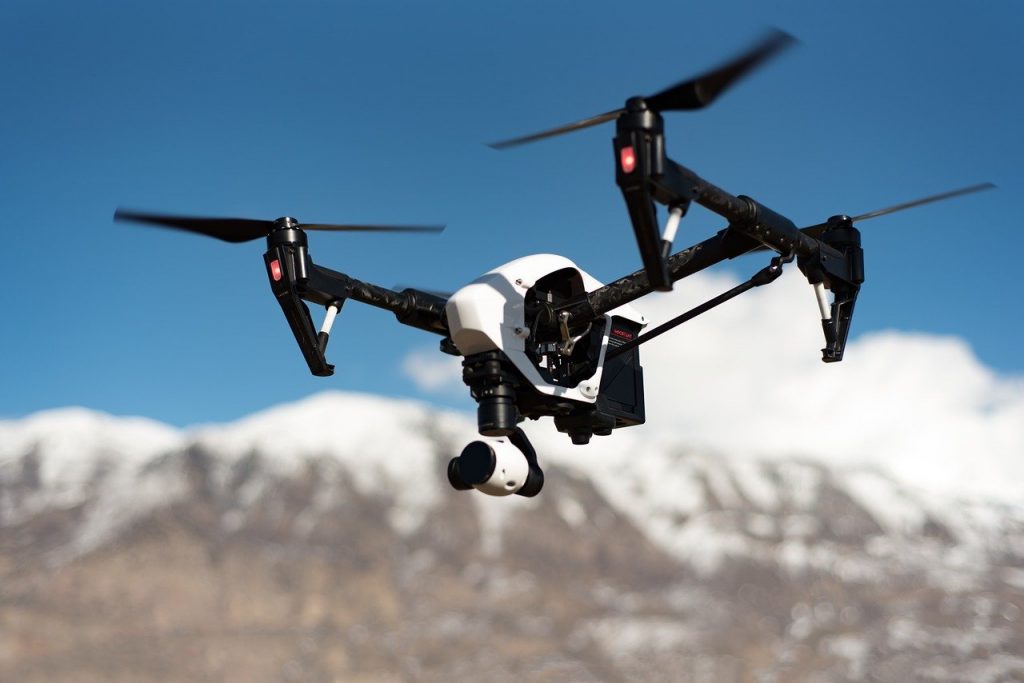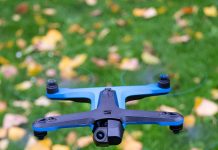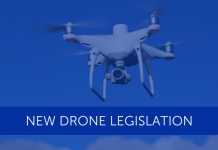How Far Can Drones Fly? Important Tips and Guidelines To Consider
Table of Contents
It’s easy to get excited to fly your new drone. But when you finally do, you end up crashing it- promptly. The thing is, you have to be aware of the necessary precautions of flying your new quadcopter. How far can drones fly? Knowing this, along with the common mistakes of piloting them can go a long way in guaranteeing a smooth flight.
Not that it’s very tricky, though. The common mistakes of flying a drone are fairly straightforward to prevent. All it takes is common sense. However, simple as these problems may be, they might surprisingly show up at any time and in various ways. You thus have to be prepared for any probable eventualities in the blue up there when flying your drone.
The FAA has previously changed some of their drone regulations, and one of them is requiring pilots to display the registration number of their machine on the outside. It can be affixed through an engraving, a sticker or a marker, among others, to make sure that it is visible.
In the same way, the FAA necessitates pilots to obtain authorization before flying in controlled airspace.
How To Fly Your Drone Legally

Before flying your drone, you need to have it registered.
Most likely, in most crafts, a set of instructions come with the package as to what you can and cannot do with your drone. In the US, machines that weigh at least 0.55 pounds have to be registered and adhere to stringent aeronautical rules about how far can drones fly and other technicalities.
The following is the short version of the said rules:
- You can only fly your craft at 400 feet or below from the ground
- When flying your machine, do so within the line of sight. Bring it in if it is not visible
- Stay away from the premises of airports
- Avoid flying near airplanes because in the air, they have the right of way
- Steer clear of flying your craft above people
- Do not fly above or near stadiums or sports events
- Stay away from car crashes, building fires and other emergency situations
- Do not fly your drone when under influence
- Be informed pertaining to controlled airspace
When it comes to controlled airspace, to say in brief, you should not fly within 5 miles distance from an airport, especially if you have not acquired authorization from the concerned air traffic controller about the time and location of your flight.
Are you flying your quadcopter for pay or compensation? A specific set of rules apply when doing so, and you must get hold of a commercial drone license.
Note the bottom line- you are not at liberty to fly your machine outside in any place you wish. Not that you have to be alarmed by the rules. They are quite easy to comply with. Just consider safety, and you should be fine.
Wait Until Conditions Are Right

It’s very understandable to have a compelling urge to put your new flying camera or toy drone out in the air the moment you unpack it. But you have to be careful to wait until the conditions are right.
Flying your quadcopter on a windy evening can have it crashing to a tree after 45 seconds of flight, particularly if the wind is beyond its capabilities.
What you mainly have to be wary of about the wind is that it becomes stronger the higher you fly. Don’t be fooled because even if conditions on the ground are acceptable, higher up tends to be not the same.
How To Handle Trees, Power Lines, Light Posts and Other Distractions
Obviously, you have to keep distance from trees, power lines and other such distractions. Then again, you can be taken aback by how these obstacles can quickly creep up when you fly your craft. Primarily, it’s the wind that can veer your quadcopter off into the trees, along with other factors that you ought to be wary of.
Next to the wind, another problem-causing factor is the handy return-to-home or RTH capability that is designed on numerous new models.
For one thing, if your drone is at a low-altitude flight and above is a high canopy of trees, the RTH feature of the machine might initiate. In this situation, you’ll learn the hard way that it has an automatic high flight altitude. By and large, RTH modes are apt to take drones to 60 feet or more.
When flying your drone at approximately 18 inches from the ground and it hits low-battery, the RTH mode could set in. It can have your machine shooting 60 feet up in the air and maneuver less than 3 feet above. Ultimately, it could return down below to autoland.
This auto-pilot mode can be uncontrollable, placing you under its mercy. Your drone can get caught in the nearby trees even if you don’t want it to go higher than 6 feet.
See to it that there are no obstacles when flying your drone from where it is to its return base, or home. Most crafts can recognize point A where they are at, and point B which is home, but the path in between should be clear, especially if it has no obstacle-avoidance sensors.
Take into account the control range as well as probable interferences. If your toy-class machine has a small operating range of say, 60 feet, it can easily fly off to the edge of its connectivity. The quadcopter will not stop when it reaches that point even if it loses connection to the controller.
You’ll find that the drone keeps flying, abruptly cuts power and finally drop from the sky. It is therefore worth to be careful if the perimeter of your range is somewhat near a tree line or similar obstacles.
Keep Within The Range and Recognize Controller Interference

Most drones come with information pertaining to their effective operating range, and this typically means the distance from the controller to the craft in a straight line. It is important that you keep within the indicated range and be ready to run towards your craft in case you slip up.
According to FCC regulations in the US, all radio-frequency electronics should recognize interference. The FAA might not like any craft in the sky to experience interference, but it is bound to happen a lot. It is something that you should get used to and prepare for. Your video feeds are likely to be affected, especially if your drone is installed with a FPV camera and live-streaming video feature connection to your phone or controller.
It makes sense to avoid flying in places that are laden with high natural magnetic interference so that your GPS function will not be distracted. It is specifically bad to fly within close proximity to radio towers, power lines and large buildings. Otherwise, your flight could become unstable and you, as the pilot could lose control of your craft.
Start Flying With A Small Or Cheap Drone
There are heaps of factors to regard in terms of flying your machine safely. Be well-informed of matters such as how far can drones fly, among other pertinent guidelines. This way, you can develop your piloting skills and operate your craft legitimately.
Practice makes perfect when flying a drone, and sensible advice is to start with a small one. It’s a bit less risky if you train with inexpensive fliers until you get the hang of things.
Check out the benefits of drones.







